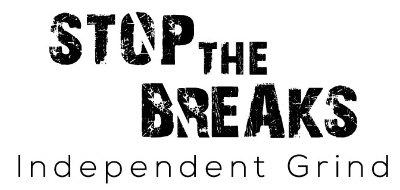
Video is everywhere, and the corresponding demand for music is exploding. Yet finding and licensing the right music at the right price is tough, due to a fragmented market, complex layers of communication between music seeker and music maker, and opaque and challenging license negotiations.
SyncFloor has set out to transform this space, connecting indie music from a diverse group of artists, labels, and distributors to the wide range of people looking for music on a daily basis. By creating a way to search for music with the references and terms people use in everyday life, and by streamlining negotiation and clearance, SyncFloor opens up new opportunities for both sides of the sync deal. The platform is now in pilot and will launch commercially in April.
“We realized, as we were looking at how sync deals happen,” says Cestjon McFarland, veteran IP lawyer and SyncFloor co-founder, “that there is no good way for parties to connect, no real marketplace and no way to look for music that mirrors how music supervisors talk about it.”
SyncFloor built a way, offering a new level of transparency to both buyers–from music supervisors to producers–and sellers, independent musicians and labels with quality tracks. Led by two founders passionate about music with strong backgrounds in law and consumer tech, SyncFloor promises to ease discovery and dealmaking in one of music’s fastest growing segments.
SyncFloor provides a centralized place to discover sync-ready music, powered by natural-language search. Users simply describe what they’re looking for, or they can enter the name of a favorite film, show or podcast; reference a popular track or artist; or identify a mood from “sad” to “funky.” “We analyzed thousands of briefs from music supervisors looking for music,” recounts co-founder Kirt Debique, a longtime programmer and project lead at Microsoft who went on to launch his own record label. “We looked carefully at how people described the music they were looking for and built our own taxonomy from there. Putting it all together, you can say something like ‘thoughtful indie folk like Sufjan Stevens with strings’ and get immediate results.”
SyncFloor relies on both algorithmic data analysis and human input to better ensure search results map directly to the ways people search: by finding something similar to a beloved show’s sound, say, or that has the same vibe as a chart-topping but hard to license hit. It’s not just about data models, but also about feels.
SyncFloor’s search results feature another key element designed to make sync simple: a license price range estimate for each track, according to use and market. This allows artists and rights holders to set their fee structure, and allows music seekers to see right away if a song is in budget. “It’s something like a Zillow estimate,” explains Debique. Further, rights clearance can be performed through the marketplace. “Discovery is the front door, but we realized that buyers cared a lot about the workflow after you have a set of candidates and you need to move to a license,” explains Debique. “We worked to make the next steps as seamless as possible and achieve a retail-grade experience. Buyers are wary about falling in love with a track if they don’t know the price range and they aren’t sure who to contact for clearance. Now they can find out immediately, whenever they are searching.”
Once the perfect track is found, SyncFloor enables the two parties to identify, negotiate and finalize their license terms. “The transaction is between the seller and buyer,” McFarland says. “But we make the process as easy as possible for everyone.”
SyncFloor also seeks to make it easy to onboard its music partners’ catalogs. “We focused a lot on how to make the experience for our rights holder and administrator partners really streamlined,” notes Debique. “All you have to do is give us a simple spreadsheet and files, and that’s it, no tagging or anything else. We take it from there.” The site has already welcomed a diverse range of music partners, including Create Music Group, 411 Music Group, Communion Music, Motor Music, and TuneCore.
“We came to this project from a distinct desire to help indie artists and people in the advertising, film, TV, and video world who are passionate about music,” Debique reflects. “That informs how we treat our partners and build our model. It’s reflected in the tools we give to supes, producers, editors, labels, publishers and artists, because we truly believe their success is our success.”



